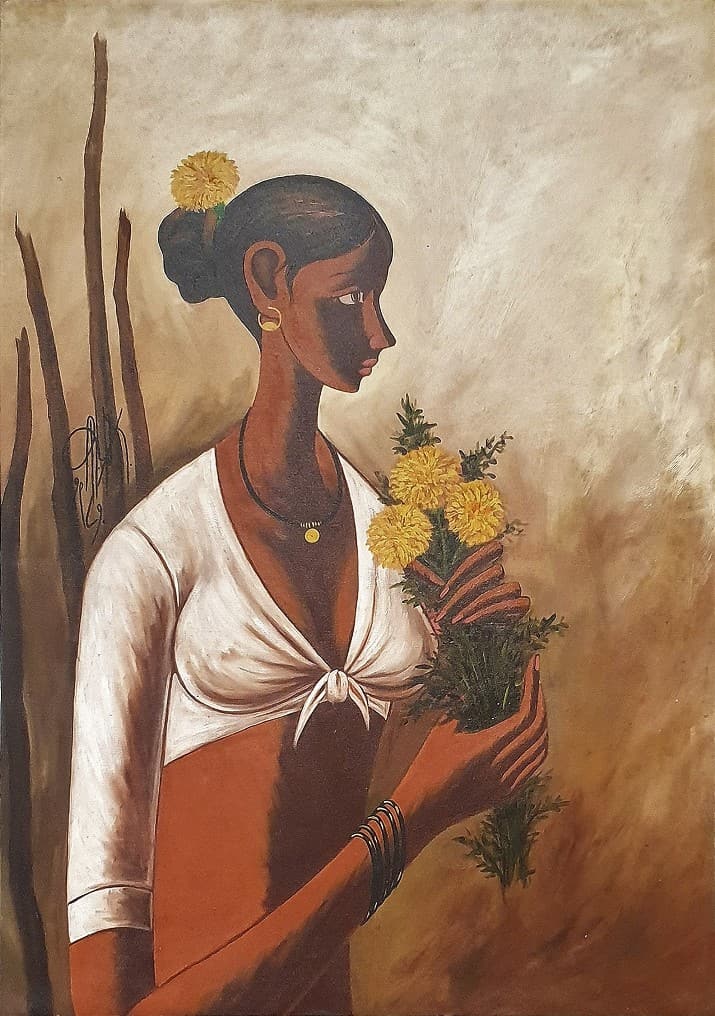The Evolution of Art: A Comprehensive Guide to Figurative Oil Painting
The Evolution of Art: A Comprehensive Guide to Figurative Oil Painting
Blog Article
A Journey Via the World of Metaphorical Oil Painting: Discovering the Special Qualities and Psychological Deepness of the Medium

Background of Metaphorical Oil Painting
Emerging during the late Middle Ages and thriving throughout the Renaissance, metaphorical oil painting has an abundant history that shows both creative development and cultural advancement. Oil paints were used in Europe as a method to boost the brightness and depth of shade in art work. Musicians such as Jan van Eyck originated the medium, showing its possible to catch complex details and textures, hence enabling a much more lifelike representation of the human kind.
As the Renaissance advanced, popular figures like Leonardo da Vinci and Michelangelo increased the limits of figurative oil paint. They highlighted anatomical precision and point of view, creating jobs that conveyed feeling and narrative depth. The tool's adaptability enabled for experimentation with light and darkness, resulting in the development of chiaroscuro methods that even more improved the visual experience.
One-of-a-kind Attributes of the Medium
The advancement of figurative oil paint has been dramatically influenced by the one-of-a-kind attributes of the tool itself. Oil paint, composed of pigments put on hold in oil, provides musicians a remarkable convenience that permits a large range of appearances and finishes. Its sluggish drying out time enables careful mixing and layering, which can create depth and luminance unattainable in other mediums.
In addition, oil paint's rich pigmentation gives vibrant colors that keep their strength over time. This characteristic is critical in figurative painting, where catching the subtleties of skin tones and emotional expressions is vital. The capacity to achieve soft changes and refined gradients enhances the realistic high quality of topics, permitting artists to convey complicated psychological states.
In addition, oil paint sticks well to numerous surface areas, such as canvas, wood, and metal, broadening the extent of creative expression. The tool's flexibility sustains various methods, from detailed realism to expressive brushwork, enabling artists to explore their individual styles.
Inevitably, the one-of-a-kind homes of oil paint not only enrich the visual experience however also encourage musicians to interact profound stories, making metaphorical oil painting a deeply evocative art kind.
Designs and strategies Utilized
Within the realm of metaphorical oil painting, artists use a diverse array of strategies and designs that contribute to the deepness and richness of their work. One noticeable method is glazing, where clear layers of paint are applied over dried out layers, enabling light to penetrate and mirror, boosting brightness and deepness. This technique is frequently made use of to accomplish a sense of realistic look and complexity in complexion.
Another strategy is impasto, where thick layers of paint are applied with a scheme knife or brush, developing a textured surface area that adds a three-dimensional top quality to the painting. This design can evoke a visceral feedback, drawing the visitor in with its responsive nature.
Artists additionally explore different brushwork designs, from fine, thorough strokes that capture detailed features to wider, more expressive strokes that share movement and emotion (figurative oil painting). The selection of color palette substantially affects the general state of mind of an item, with warm tones typically passing on sensations of convenience and trendy tones suggesting sorrowful
In addition, the combination of chiaroscuro, the comparison in between light and darkness, permits artists to create significant results that improve the narrative top quality of their work. Each technique and style is very carefully picked to elevate the visitor's experience and understanding.
Emotional Depth in Metaphorical Art
Psychological deepness serves as a keystone in metaphorical art, permitting artists to transcend mere representation and engage customers on an extensive degree. This psychological vibration is often achieved through the nuanced portrayal of human figures, expressions, and interactions. Artists harness the power of darkness, shade, and light to stimulate sensations that reverberate deeply with the target market, producing a natural connection to the subject matter.
In figurative oil painting, the elaborate layering of paint can reflect the complexities of human emotion. The selection of scheme, whether cozy or trendy, plays a crucial duty in establishing the state of mind and environment of a piece. Softer hues might stimulate serenity and introspection, while bold, different colors can communicate stress and dramatization.

Influential Artists and Their Functions
Various significant artists have dramatically shaped the landscape of figurative oil paint, each adding distinct viewpoints and techniques that remain to influence modern creators. Among these musicians, Lucian Freud stands out for his intense mental deepness and raw representation of the human form, typically obscuring the lines in between beauty and decay. Freud's works, defined by thick, impasto brushstrokes, welcome viewers to challenge the complexities of identity and vulnerability.

Similarly, Andrew Wyeth's meticulous realistic look in items like "Christina's World" catches extensive narratives within relatively simple compositions. His use light and darkness stimulates a sense of nostalgia and psychological vibration, drawing audiences into the intimate globes he depicts.
In the realm of modern art, Kehinde Wiley has actually gotten recognition for his go to this site vibrant, epic portraits that challenge typical ideas of representation. By placing individuals of color in contexts reminiscent of timeless portraiture, Wiley's job redefines the canon of art background.
These artists, along with others, have not just enriched figurative oil paint but have actually likewise expanded the discussion surrounding culture, feeling, and identity, making certain that the medium remains a crucial form of expression in the art globe. figurative oil painting.
Conclusion
Finally, figurative oil paint remains an effective tool that encapsulates the intricacies of human emotion with its rich pigmentation and functional methods. The historic evolution of this art type, incorporated with its special features, permits extensive artistic expression. Methods such as glazing and impasto boost the emotional resonance of each item, while the contributions of prominent musicians remain to shape the discourse and motivate surrounding this timeless category. The trip through figurative oil painting discloses its lasting importance in the art globe.
The exploration of figurative oil paint uses an extensive understanding right into the interaction of strategy, feeling, and historical context that defines click to investigate this venerable medium. Oil paint, composed of pigments suspended in oil, offers artists an amazing adaptability that enables for a large variety of surfaces and structures.Within the realm of figurative oil painting, artists employ a diverse selection of techniques and styles that contribute to the depth and splendor of their work.Many significant musicians have actually substantially formed the landscape of figurative oil painting, each contributing unique perspectives and strategies that proceed to influence contemporary developers.In conclusion, figurative oil paint continues to be an effective medium that encapsulates the intricacies of human feeling with its rich coloring and functional methods.
Report this page